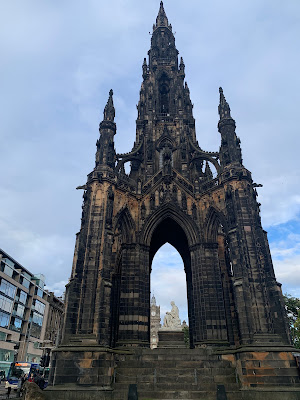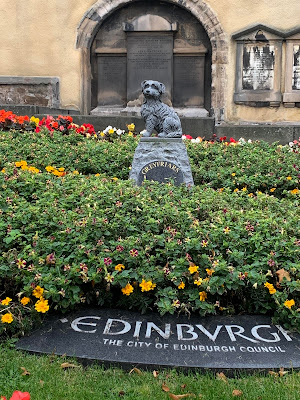2nd October 2023
In the next few days, the judgement
will be delivered and the police have ample proof against me and my co-conspirators.
The lawyer representing us tried hard to convince us to stay quiet and deny all
allegations but we refused to take his advice. We knew the consequences before
we set out on the mission and we did achieve it! So why not reveal the truth to
all…speak nothing but the truth. Do not know if in the next prison I will get
any pen and paper to write my story so, in the remaining days here, let me put
the pen to the paper and tell everyone that we are not thieves and common
criminals… we love our nation and are willing to go to the gallows to face the
consequences of what we did for which we have no regrets.
The others dropped their knives and
forks and looked at Salim with amazement…Jeetu started laughing and said… You are completely sloshed and
talking bullshit.
No Jeetu, I am dead serious and I have
been thinking of options that I could do alone or we could do together.
I now spoke in serious tone…Chal karte hain… let’s do the most
difficult of all the possible options you have thought of.
Tony, wiped his mouth with the napkin
and nodded his head in agreement…Tell us what we can do for which not just our
family will remember us but maybe our whole school… no the whole country and
even beyond. Will be nice to see our photos everywhere even without having an
Insta account. As Shubhankar said, let us do something really big…bada matlab ekdum bada.
Ok, now that you are with me, I will
show you my dairy and possibly the best and the biggest work we can do together
but not a word about this should be shared with anybody. You all need to swear
by your parents and children that you will not a speak a word about this with
anyone, whether we do it or not.
We did not put our hands over a
burning candle as they would have done it a hundred years ago but we all made an eye contact with each other and said a ‘Yes’, the
sound of which echoed deep inside our souls.
Salim pulled out a small diary which
had tags of different shades. He then went on to open it on the page with the
red tag and a star painted on it. He
opened the diary completely and flattened it and put it on the table before him
for all to read.
Jaws dropped…there was complete
silence… we quickly paid for the food and drinks and started walking back to
our hotel. It was raining outside and we did not have our umbrellas but no one
complained. We just kept walking in brisk pace ignoring the strip bar we had
planned to go that night after the dinner. We reached the hotel and went
straight to our rooms and within ten minutes the three of us landed at Salim’s door…banging
it loudly. He quickly opened the door and we pushed him to the bed and then
boxed him a couple of times but never to hurt. He kept laughing while this friendly
torture was going on.
Couldn’t you have thought of something
simpler? We would have happily contributed money to start a foundation for
children’s education or constructed toilets in the villages. Can we not change
the plan?
No. Let us do this and each one of us
will be immortalised.
Bhai, what inspired you to even think
of this dangerous path?
By now all had settled down on the
chairs and opened a new bottle of Glenmorangie. Salim sat on the bed and
started speaking… Remember when we went to the Edinburgh Castle last evening
for the party and we went to see the Scottish Crown Jewels there. Over there
with the jewels lay a piece of stone with a metal piece in between holding two
blocks. That was the Stone of Destiny, also called the Stone of Scone.
 |
| Coronation Chair and Scone beneath: Courtesy Britannica |
The Stone of Scone, the
ancient Stone upon which Scottish monarchs had been crowned, was taken
from Scone near Perth,
Scotland, by King Edward 1 of England in 1296 during the Scottish Wars of Independence as a spoil of war,
kept in Westminster Abbey in London and fitted into King Edward's Chair. Subsequently the English and then the British monarchs had been crowned
sitting upon the chair and the Stone. At the time, the Stone was viewed as a
symbol of Scottish nationhood; by moving the Stone to London, Edward I was
declaring himself as the King of the Scots too.
 |
| Edinburgh Castle |
On discovering that the
Stone was missing, the authorities closed the border between Scotland and
England for the first time in four hundred years. A fortnight later, Hamilton
and some friends recovered the two pieces and brought them to Glasgow. In April
1951, the police came to know that the Stone was there at the High Altar at
Arbroath Abbey. The Stone was returned to Westminster Abbey in February 1952. In
1996, the British Government returned the Scone to Edinburgh to be kept there
except when coronations happened in London.
I jumped up and said aloud….Matlab ki them four and now us four….all
for one and one for all! This inspiration of yours is fine but what about the
part you want us to perform…..how is that linked?
Salim’s eyes sparkled as he
spoke softly…Remember in London, we had gone to the Tower of London. There we
stood in a serpentine queue to see the Crown Jewels. While everything there was
good, the thing that caught all our attention was the shining diamond on the crown last worn by the Queen Mother…the Kohinoor or the Mountain of Light. How many times we
kept going up and down wanting to admire the diamond that truly belongs to our
country but lies so far away? The English subjugated the Scots and took away their
Scone and same was with India and the Kohinoor. It belongs to us Indians.

Picture courtesy National Geographic
There are various controversies regarding the origin but
most widely accepted one says that it came originally from the Kollur mine of the Krishna River and
was presented to the Mughal emperor Shah Jahan in 1656. It was part of the
Peacock Throne before being looted by Nadir Shah of Iran when he ransacked Delhi in 1739. After his death it fell
into the hands of his general, Ahmed Shah,
founder of the Durrani dynasty of
Afghans. His descendant, Shah Shuja, then a fugitive in India, was forced to surrender the stone
to Maharaja Ranjit Singh.
On the annexation of the Punjab in 1849,
the Kohinoor was acquired by the British and was placed
among the crown jewels of Queen Victoria.
The diamond originally
weighed 191 carats, but it was re-cut to 106 carats to enhance its
fire and brilliance in 1852 by the royal jeweller.
Guys, do you understand how the two stories are similar
and yet one has found its way back to its rightful home while the other stays
imprisoned here in this land of the colonists.
 |
| Tower of London |
.jpg) |
| The Beefeater: Guardians of the Tower |
I take your point Shubhankar. If security has improved and is now much more vigilant, technology and rightful application of mind can be of help to us as well. If we put our hearts and souls into this venture, there is no way we will not succeed. We will have to make some plans, get more help including finance and manpower but no one should know of the real motive.
We were convinced with the Pied Piper’s music and agreed
to follow him. For the next three days, we sat in the same room and did not
leave the place even for a minute for we were planning the biggest and the most
daring heist in history. Later we went back home and started work on our
respective areas. Six months later the tabloids and the news channels were on
fire…
The Metropolitan Police
of London have confirmed that the Kohinoor diamond is missing from the Queen’s
crown. As per sources they have solid leads and the culprits will be caught soon.
SS
.jpg)
.jpg)



















